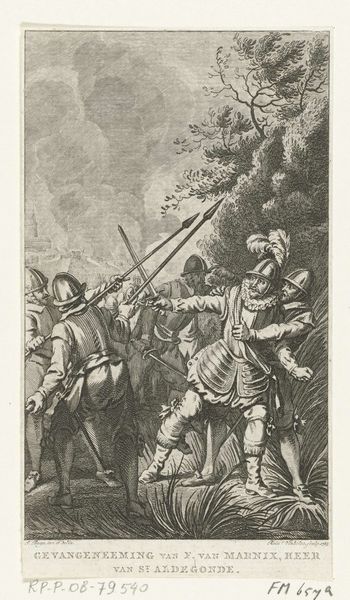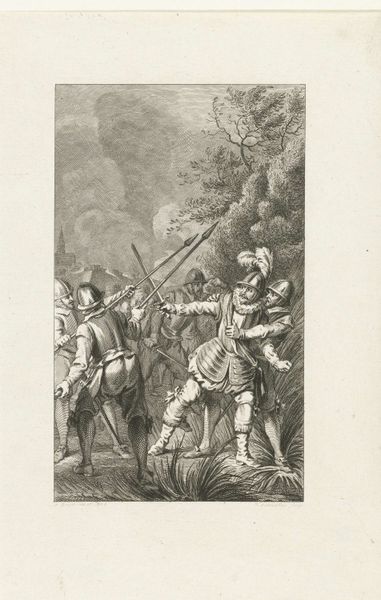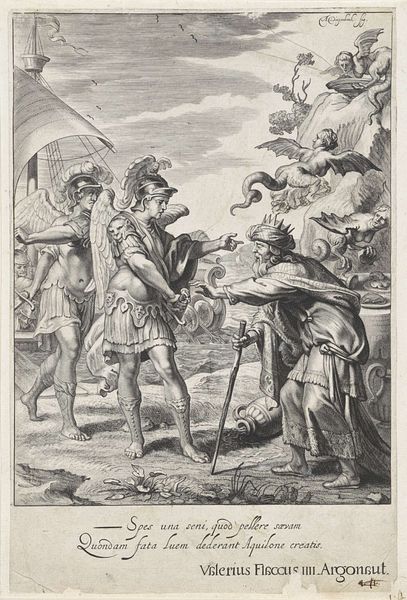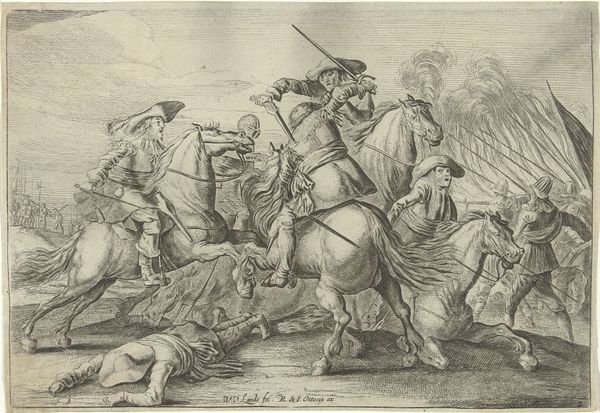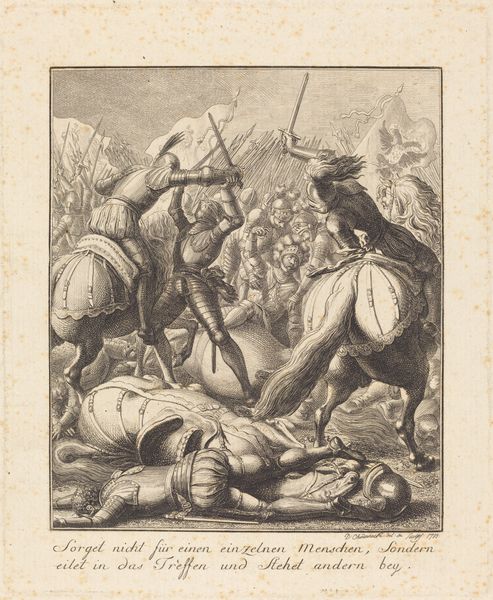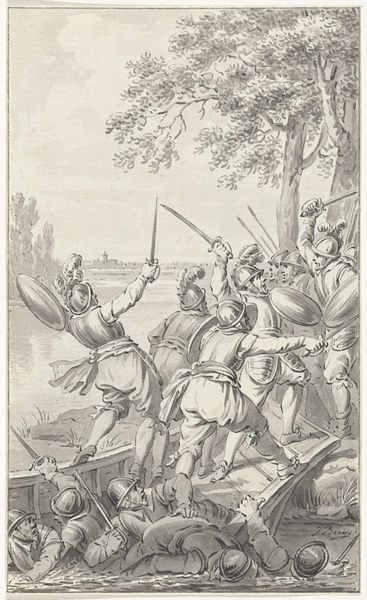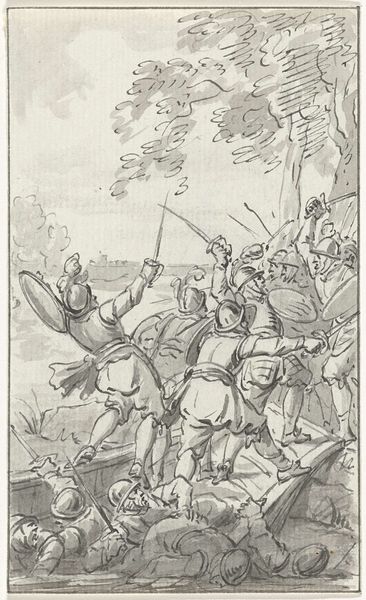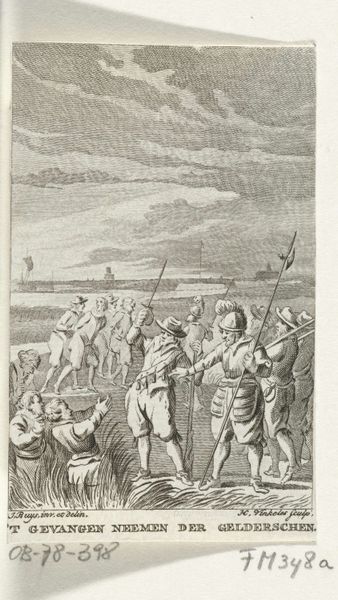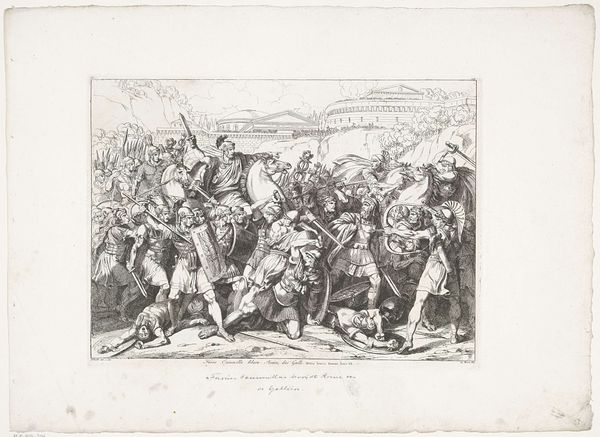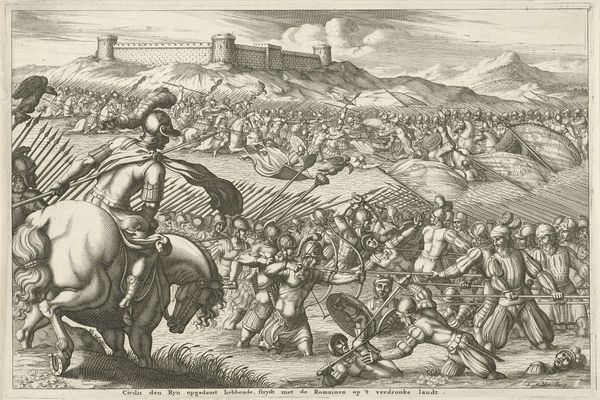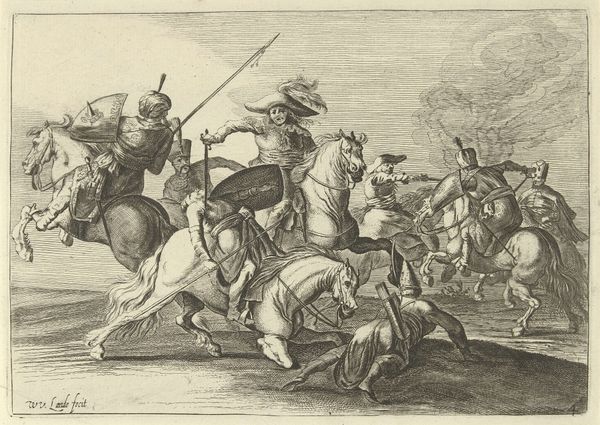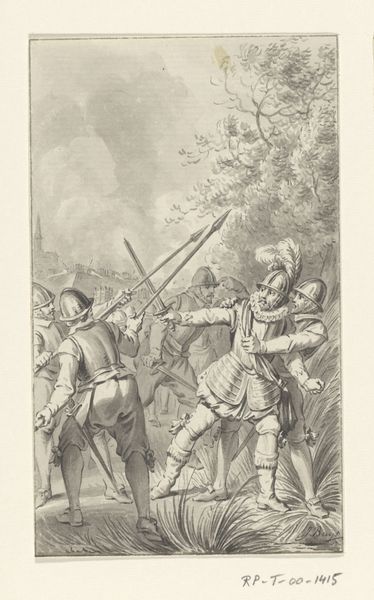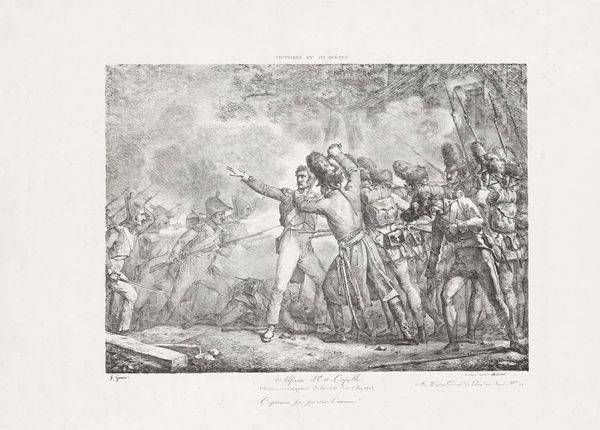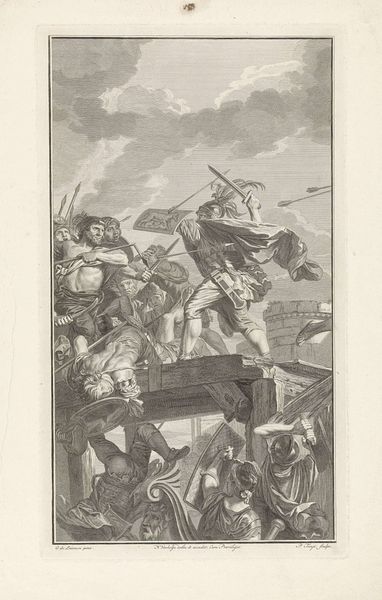
Dimensions: height 180 mm, width 135 mm
Copyright: Rijks Museum: Open Domain
Curator: This engraving, dating back to 1785, is entitled "Dood van Charles de Boisot, 1575", which translates to "Death of Charles de Boisot, 1575." The piece is attributed to Theodoor Koning, and is currently held in the Rijksmuseum collection. Editor: Whoa, a bit grim, isn't it? Even without knowing the story, you get a strong sense of struggle. All those figures packed together, a chaotic dance of steel and death. There's something stark and dramatic about the contrast of light and shadow that draws you in, like witnessing a brutal stage play. Curator: The style very much situates the print within broader historical narratives. As history painting it clearly commemorates the titular demise, which, of course, occurred over two centuries prior to its creation, in a conflict heavily involving issues of Dutch sovereignty and power in relation to other colonial forces. Editor: Funny how history gets retold, isn't it? This feels like it's trying to freeze a heroic moment. You've got Boisot as a tragic hero in his last stand, being swarmed at close quarters, perhaps symbolizing something greater at stake. The engraving’s intensity comes in the way the scene uses line work; it's almost like I can feel the tension in the lines, pushing and pulling me around the scene. Curator: Right, so many cross-hatched lines help create depth but they also underscore this idea of overwhelming conflict. It invites viewers into thinking about both the political implications of death in conflicts but also, obviously, to mourn. But what kind of viewer does the work suppose itself to address, I wonder? We can clearly tell that, at a distance, it valorizes this type of aggressive confrontation. Editor: I'd also say that for contemporary viewers, perhaps there are other ways to receive the emotional register of this work as well. Like that deep awareness we now share of the cost of wars in all aspects: on nature, and our psyche, our culture, everything... Curator: Yes, so perhaps we might better consider the violence depicted through that contemporary theoretical lens that encourages viewers to critically confront the historical subject matter of national conflicts of the Early Modern period. It demands we question power dynamics of then and now, and understand how images perpetuate those very narratives. Editor: Exactly. Ultimately, it’s this potential for multiple interpretations and reflections that makes it such a compelling artwork for us today.
Comments
No comments
Be the first to comment and join the conversation on the ultimate creative platform.
